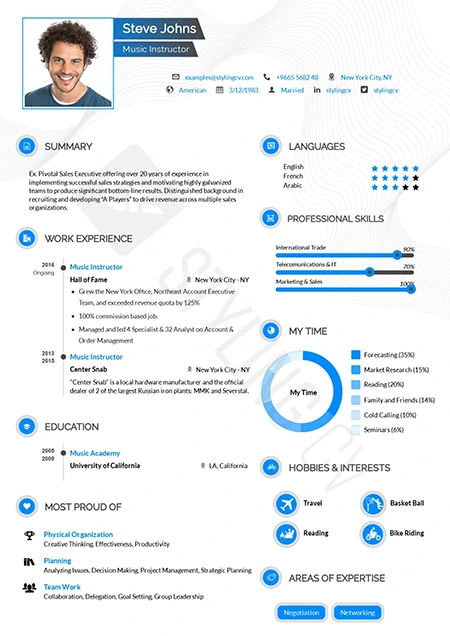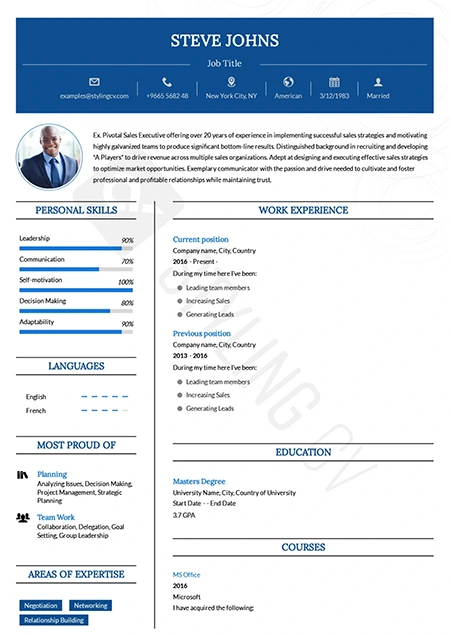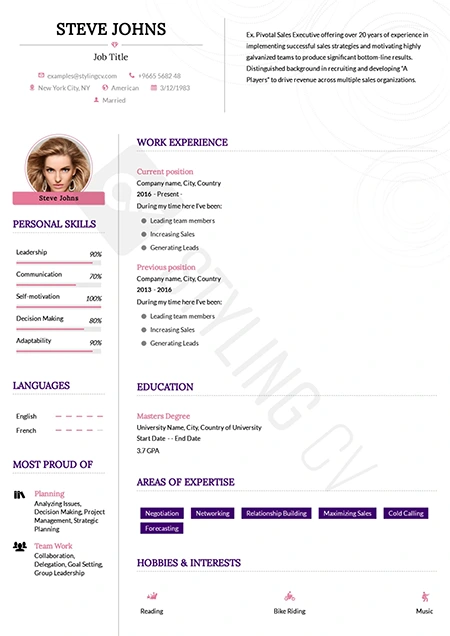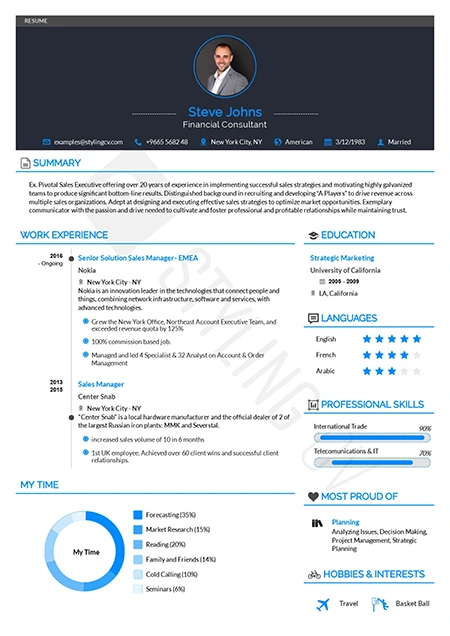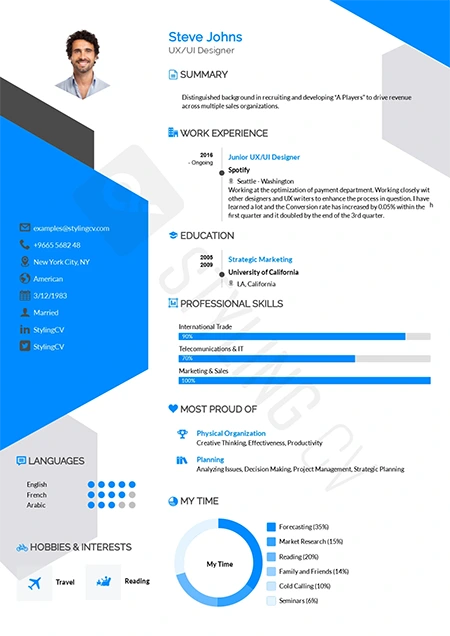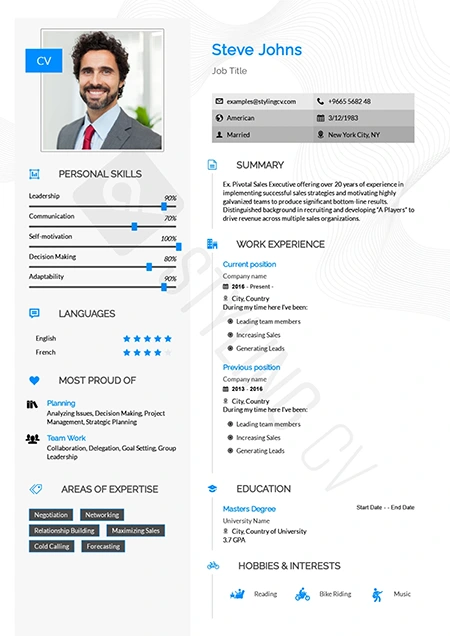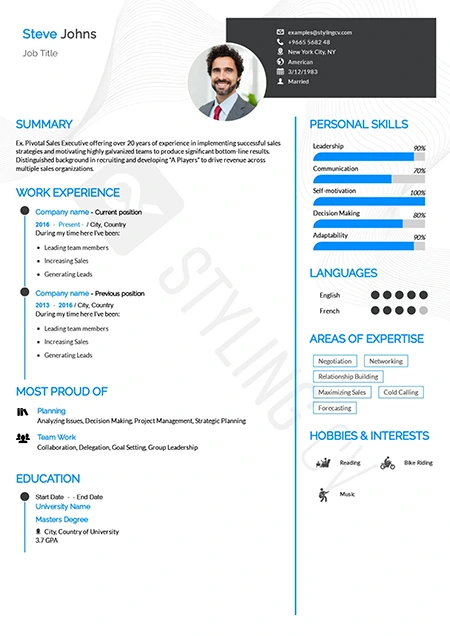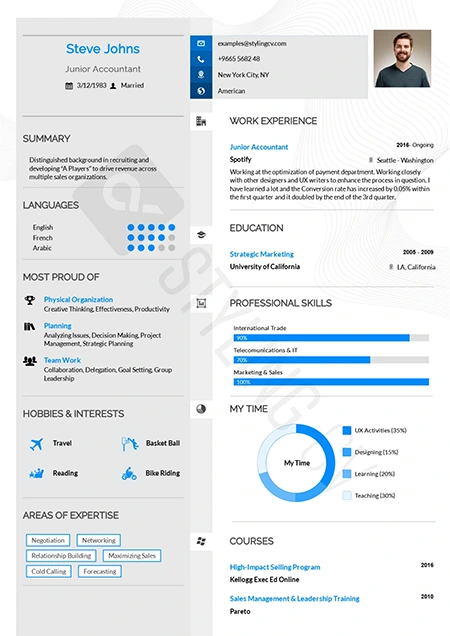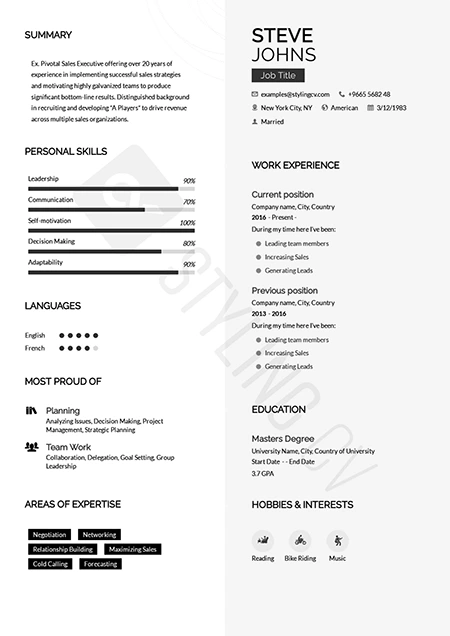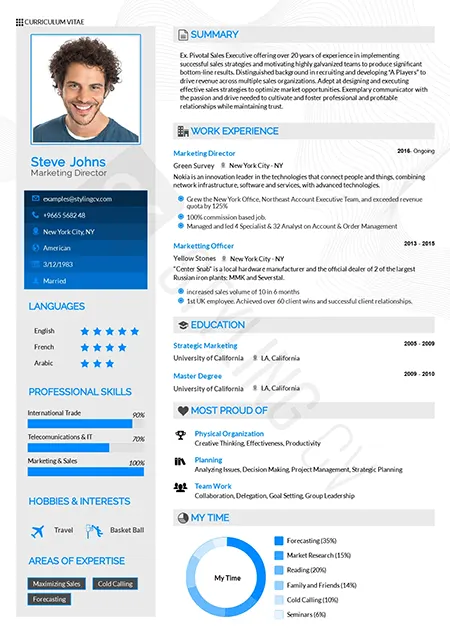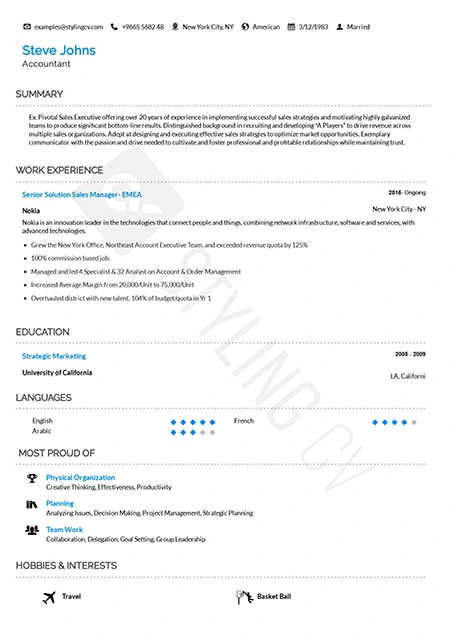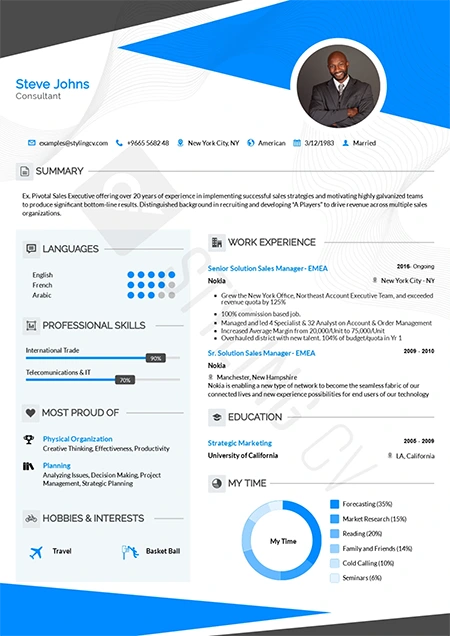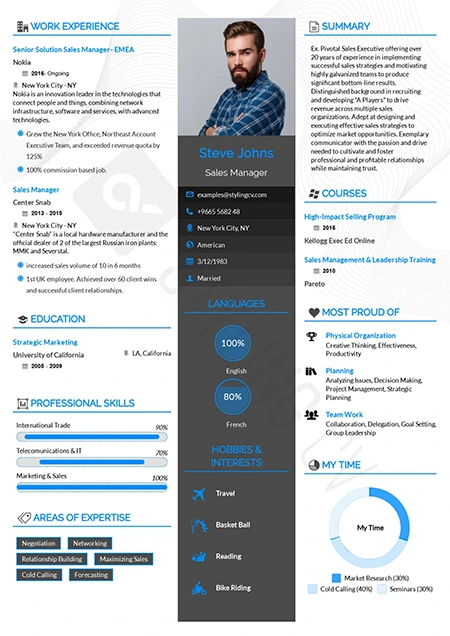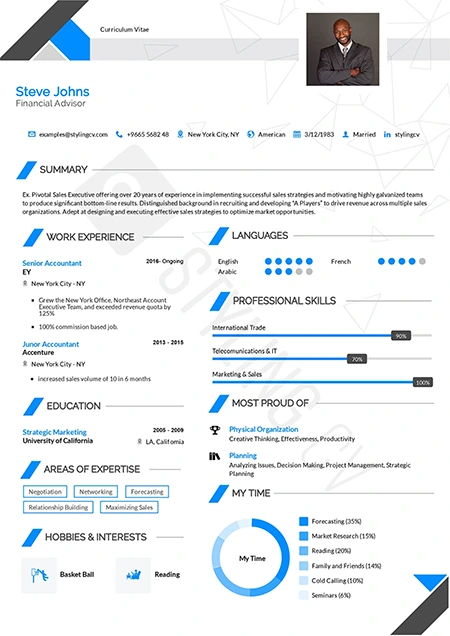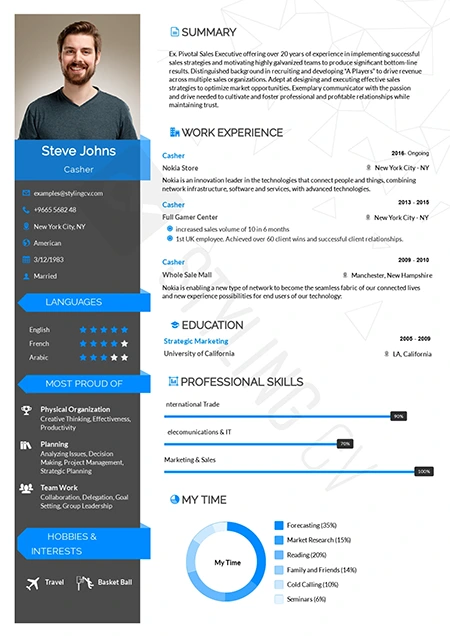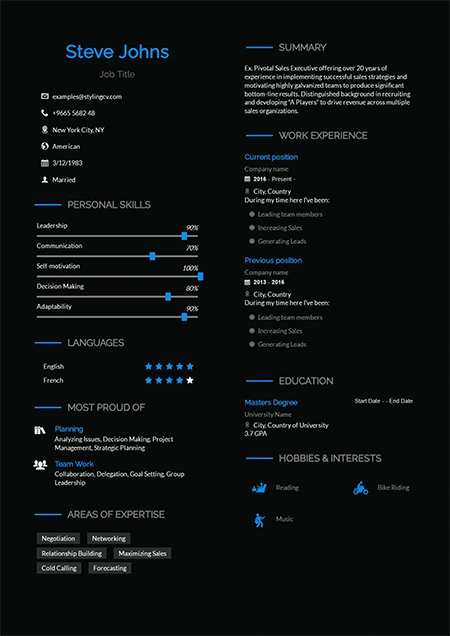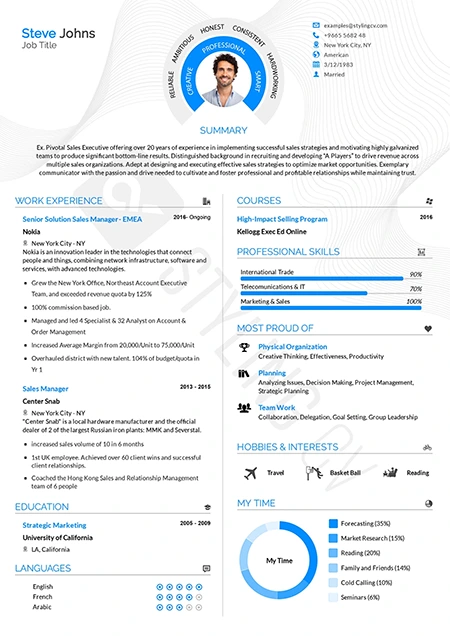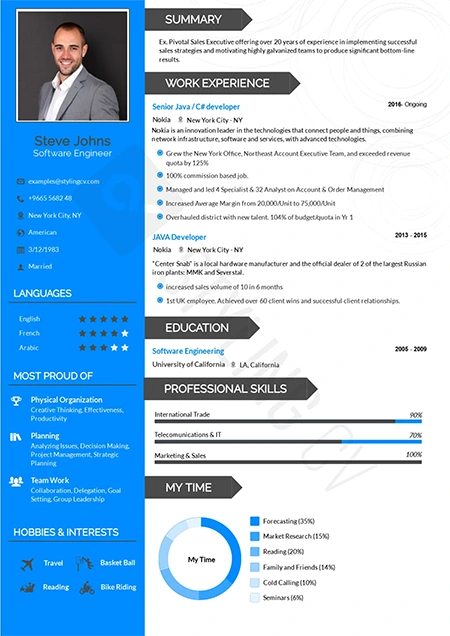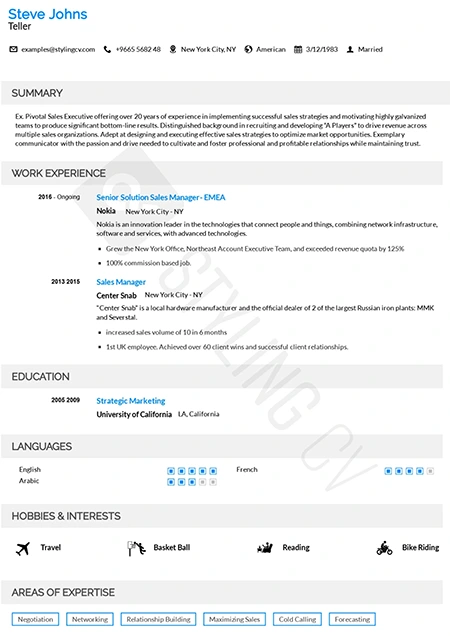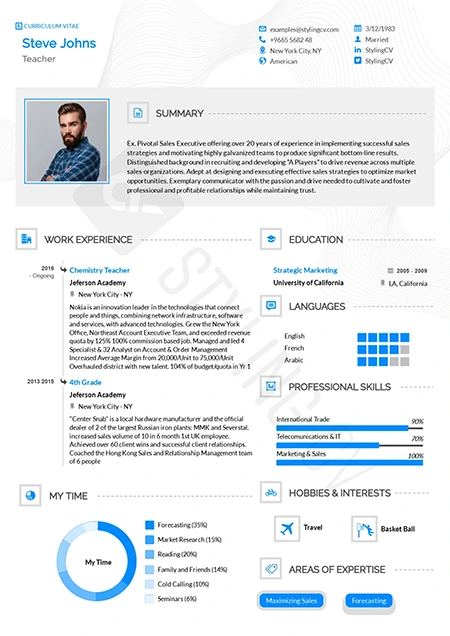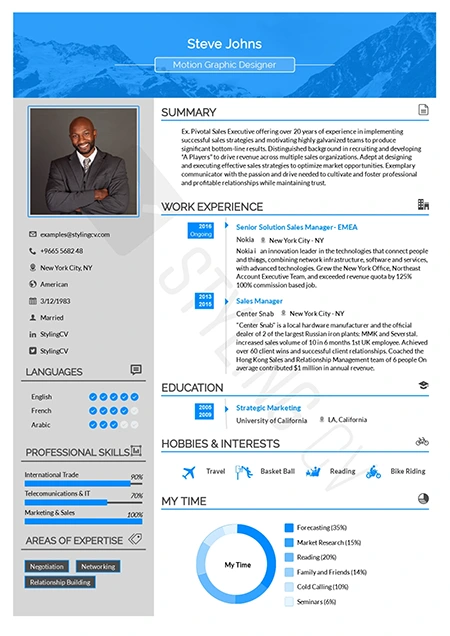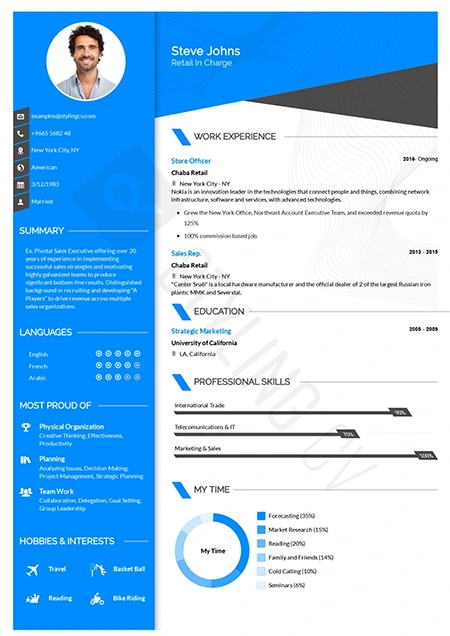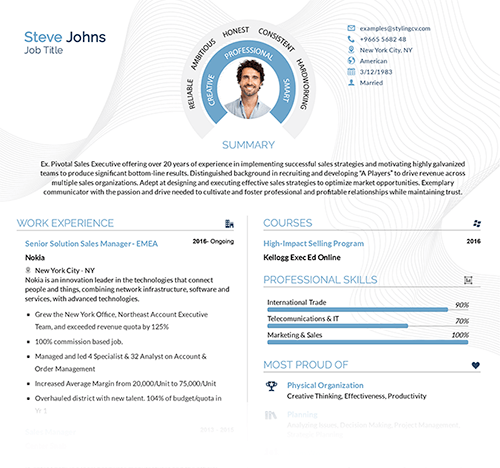wir bieten Ihnen 33+ CV-Vorlagen
Die ideale Lebenslaufvorlage enträtseln: Integration von Arbeitsgeschichte, Berufserfahrung und mehr
Die Erstellung eines aussagekräftigen Lebenslaufs (CV) kann eine Herausforderung sein, vor allem, wenn Sie nicht genau wissen, was er enthalten soll. Die richtige Lebenslaufvorlage kann der Schlüssel dazu sein, nicht nur Ihren beruflichen Werdegang und Ihre Erfahrung hervorzuheben, sondern sich auch von den anderen Bewerbern abzuheben. In diesem umfassenden Leitfaden gehen wir auf die Struktur eines effektiven Lebenslaufs, die Feinheiten beim Verfassen eines Lebenslaufs und die Rolle eines Anschreibens als Ergänzung zu Ihrem Lebenslauf ein.
Die Grundlagen einer Lebenslaufvorlage
Ein Curriculum Vitae, lateinisch für "Lebenslauf", ist ein detailliertes Dokument, das Ihren beruflichen und akademischen Werdegang aufzeigt. Im Gegensatz zu einem Lebenslauf, der in der Regel prägnant und auf eine bestimmte Stelle zugeschnitten ist, ist ein Lebenslauf umfassender und enthält Veröffentlichungen, Präsentationen und andere relevante Details.
Eine ideale Lebenslaufvorlage enthält im Kern mehrere wichtige Abschnitte:
- Kontakt Informationen: Dazu gehören Ihr vollständiger Name, Ihre Berufsbezeichnung, Ihre E-Mail-Adresse, Ihre Telefonnummer und möglicherweise ein LinkedIn-Profil oder eine persönliche Website.
- Persönliches Profil: Dies ist ein kurzer Überblick über Ihren Hintergrund, Ihre Fähigkeiten und Ihre Karriereziele.
- Arbeit Geschichte: Hier beschreiben Sie Ihren beruflichen Werdegang, indem Sie Ihre Aufgaben, Verantwortlichkeiten, wichtigsten Erfolge und die Unternehmen oder Organisationen, für die Sie gearbeitet haben, angeben.
- Bildung: In diesem Abschnitt werden Ihre akademischen Qualifikationen aufgeführt, einschließlich der Institutionen, die Sie besucht haben, der Abschlüsse, die Sie erworben haben, und der Daten Ihres Studiums.
- Fertigkeiten: Es ist wichtig, dass Sie sowohl die Soft Skills als auch die Hard Skills hervorheben, die für die Stelle, auf die Sie sich bewerben, relevant sind.
- Zertifizierungen und Errungenschaften: Erwähnen Sie alle zusätzlichen Zertifizierungen, Auszeichnungen oder Anerkennungen, die Ihr Profil stärken können.
- Referenzen: Diese können beruflicher oder akademischer Natur sein und müssen mit deren Zustimmung angegeben werden.
Bedeutung des beruflichen Werdegangs und der Erfahrung
Der berufliche Werdegang und die Berufserfahrung sind wichtige Säulen eines Lebenslaufs. Arbeitgeber legen oft großen Wert auf diese Abschnitte, da sie einen Einblick in Ihr Potenzial als Arbeitnehmer geben. Ihr beruflicher Werdegang sollte chronologisch geordnet sein, beginnend mit Ihrer letzten Position. Geben Sie für jede Position die Stellenbezeichnung, den Arbeitgeber, die Beschäftigungsdaten sowie Ihre wichtigsten Aufgaben und Leistungen an.
Bei der Auflistung Ihrer Berufserfahrung ist es wichtig, sich darauf zu konzentrieren, was Sie während Ihrer Tätigkeit erreicht und welche Fähigkeiten Sie entwickelt oder verfeinert haben. Vermeiden Sie allgemeine Aussagen und machen Sie Ihre Leistungen nach Möglichkeit messbar, indem Sie Ihren Wert durch konkrete Beispiele demonstrieren.
CV- und Lebenslaufvorlagen nebeneinander stellen
Obwohl "Lebenslauf" und "Lebenslauf" oft synonym verwendet werden, unterscheiden sie sich in Inhalt, Länge und Zweck. Eine Lebenslaufvorlage ist in der Regel kürzer und prägnanter und konzentriert sich in erster Linie auf relevante Erfahrungen und Fähigkeiten, die auf eine bestimmte Bewerbung zugeschnitten sind. Eine Lebenslaufvorlage hingegen bietet einen detaillierteren Überblick über Ihr berufliches und akademisches Leben und eignet sich ideal für Stellen in der Wissenschaft oder Forschung oder für Stellen, die umfassende Informationen über Ihre Karriere erfordern.
Die Macht eines überzeugenden Anschreibens
Ein Anschreiben sollte nie ein nachträglicher Gedanke sein. Stattdessen sollte es als persönliche Einführung dienen, eine Plattform, auf der Sie vermitteln können, warum Sie der perfekte Kandidat für die Stelle sind. Es gibt Ihnen die Möglichkeit, in Ihren eigenen Worten zu erklären, wie Ihre Fähigkeiten, Erfahrungen und Leistungen mit den Anforderungen des Unternehmens übereinstimmen. Denken Sie daran, dass das Anschreiben keine Wiederholung Ihres Lebenslaufs ist. Es ist Ihre Gelegenheit, eine Geschichte zu erzählen, Ihre Persönlichkeit zu präsentieren und eine Verbindung zum Personalverantwortlichen aufzubauen.
Abschließende Gedanken zum Schreiben von Lebensläufen
Wenn Sie einen Lebenslauf schreiben, müssen Sie ihn unbedingt auf die Stelle, für die Sie sich bewerben, abstimmen. Nehmen Sie sich die Zeit, das Unternehmen zu recherchieren, die Rolle zu verstehen und Ihre Erfahrungen, Fähigkeiten und Leistungen entsprechend auszurichten. Fassen Sie Ihren Lebenslauf kurz, klar und professionell zusammen und vermeiden Sie unnötigen Jargon oder langatmige Sätze. Geben Sie der Qualität den Vorrang vor der Quantität und achten Sie darauf, dass jedes Wort einen Wert hat und für die Bewerbung relevant ist.
Formatierung und Präsentation
Der visuelle Aspekt Ihres Lebenslaufs kann genauso einflussreich sein wie sein Inhalt. Im heutigen digitalen Zeitalter kann ein gut formatierter, leicht zu lesender Lebenslauf einen großen Unterschied machen. Halten Sie das Layout sauber und strukturiert, mit viel Weißraum und klar definierten Abschnitten. Verwenden Sie eine professionelle Schriftart und achten Sie auf Konsistenz in Ihrem Dokument. Aufzählungspunkte können die Lesbarkeit verbessern und dezente Farbakzente können Ihren Lebenslauf hervorheben, ohne ihn zu erdrücken.
Ein Blick auf digitale Lebensläufe
Da die Geschäftswelt zunehmend auf digitale Lösungen setzt, werden digitale Lebensläufe immer häufiger verwendet. Diese bieten ein interaktiveres Erlebnis und ermöglichen es Ihnen, Elemente wie Links zu Portfolios, Präsentationen, Veröffentlichungen oder sogar Videoeinführungen einzubinden. Stellen Sie sicher, dass Ihr Lebenslauf sowohl mit gedruckten als auch mit digitalen Formaten kompatibel ist, um den unterschiedlichen Vorlieben der Arbeitgeber gerecht zu werden.
Lektorat Ihres Lebenslaufs
Das Korrekturlesen ist ein wichtiger, aber oft übersehener Schritt beim Verfassen eines Lebenslaufs. Ein einziger Tippfehler oder grammatikalischer Fehler kann Ihre Professionalität und Glaubwürdigkeit untergraben. Verwenden Sie die Rechtschreibprüfung, aber verlassen Sie sich nicht ausschließlich darauf. Lesen Sie sich Ihren Lebenslauf laut vor, lassen Sie ihn von einem Kollegen überprüfen oder nehmen Sie sogar ein professionelles Korrekturlesen in Anspruch. Auf diese Weise können Sie sicherstellen, dass Ihr Lebenslauf perfekt und fehlerfrei ist.
Wichtigste Erkenntnisse
Eine umfassende und gut strukturierte Lebenslaufvorlage, die wichtige Abschnitte wie den beruflichen Werdegang und die Berufserfahrung enthält, kann ein wirkungsvolles Instrument bei Ihrer Stellensuche sein. In Verbindung mit einem überzeugenden Anschreiben präsentiert er Sie als vielseitigen, detailorientierten Bewerber. Denken Sie daran, dass Ihr Lebenslauf mehr ist als eine Auflistung Ihrer Berufserfahrungen; er ist eine Darstellung Ihres Engagements, Ihrer Fähigkeiten und Ihres Potenzials.
Im Grunde genommen ist das Schreiben eines Lebenslaufs eine Übung in Personal Branding. Jedes Element sollte harmonisch zusammenwirken, um die beste Version Ihres beruflichen Selbst darzustellen. Ganz gleich, ob Sie ein erfahrener Fachmann sind oder Ihre Karriere gerade erst begonnen hat - wenn Sie Zeit und Mühe in Ihren Lebenslauf investieren, können sich Ihnen aufregende Möglichkeiten eröffnen. Machen Sie sich die Kraft der idealen Lebenslaufvorlage zunutze und heben Sie Ihre Bewerbung von anderen ab.
Fangen Sie Ihre Vorlage jetzt!
Beginnen Sie mit unseren 100 Widgets und Farboptionen, um Ihren Lebenslauf zu erstellen.
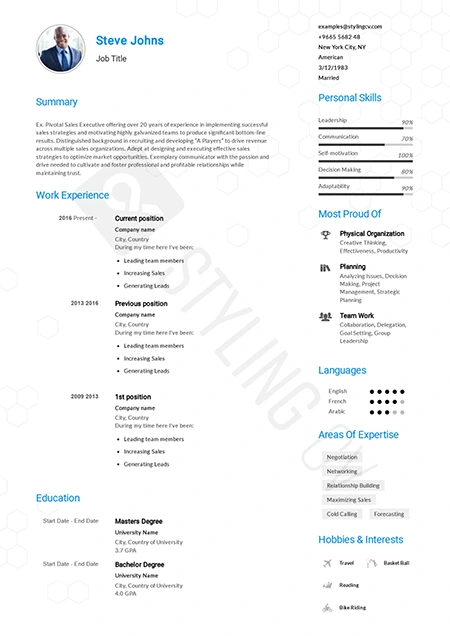 Wählen Sie
Wählen Sie Ein minimalistisches Design für Lehrer und Erzieher. Klare Informationsgrafiken, die Ihre Fähigkeiten in Ihrem Lebenslauf deutlich herausstellen.
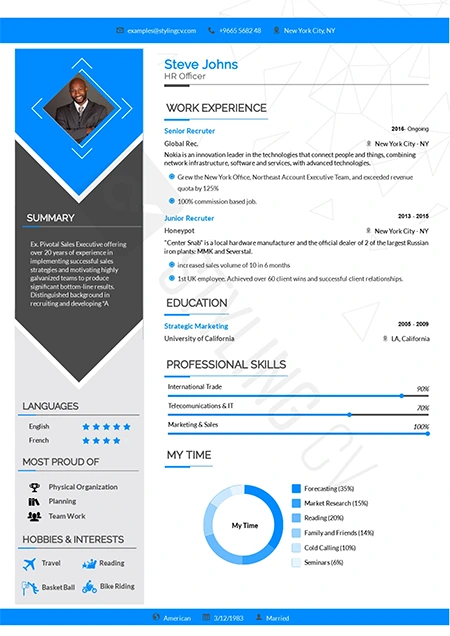 Wählen Sie
Wählen Sie Ein einfacher Lebenslauf, der sowohl die Fähigkeiten als auch die Fertigkeiten in einem einfachen und lesbaren Format darstellt
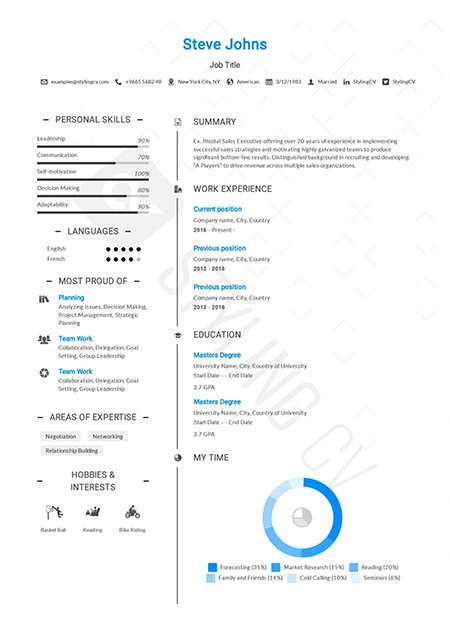 Wählen Sie
Wählen Sie Die spitze Kopfzeile mit ihren kräftigen Farben ist ein dominanter Auftritt für Ihren Lebenslauf. Ihre Fähigkeiten haben einen großen Platz auf der linken Seite in diesem Lebenslauf Vorlage.
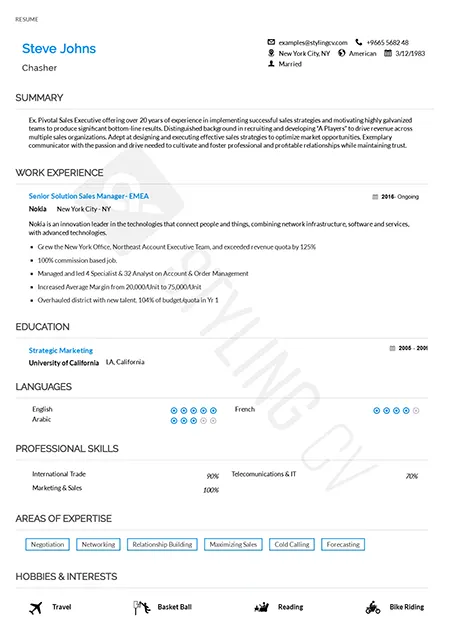 Wählen Sie
Wählen Sie Gelernte Sprachen, fachliche und soziale Kompetenzen sowie Hobbys finden auf der linken Seite ihren Platz. Während Ihre schulischen und beruflichen Fähigkeiten in dieser Lebenslaufvorlage auf der rechten Seite stehen
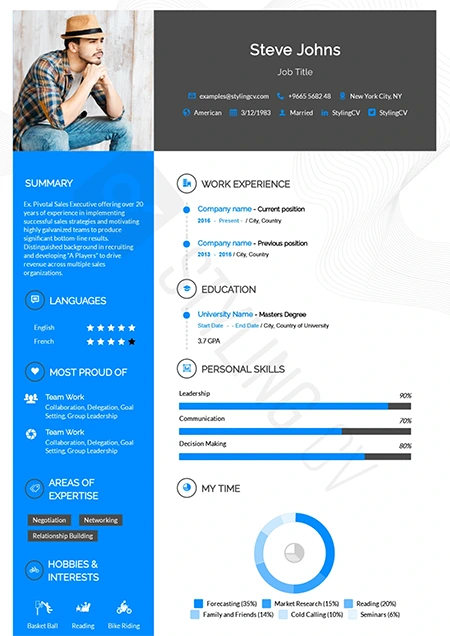 Wählen Sie
Wählen Sie Eine helle und bunte Lebenslaufvorlage. Werden Sie von den Personalverantwortlichen sofort mit einer vielfältigen Liste von Farben gesehen
catics-de
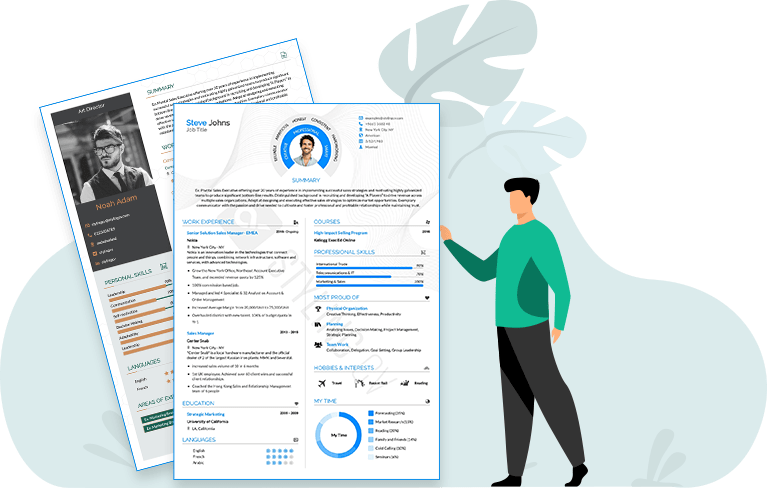
Testen Sie StylingCV jetzt KOSTENLOS.
Es ist ganz einfach!
Meinen Lebenslauf JETZT erstellen
Was ist ein Lebenslauf?
Ein Lebenslauf ist eine kurze Zusammenfassung Ihrer Person, in der Sie Ihre beruflichen und persönlichen Erfahrungen, Fähigkeiten und Ihre akademische Ausbildung darstellen.
Ein gut geschriebener Lebenslauf einschließlich eines Anschreibens kann den Unterschied zwischen einem Vorstellungsgespräch und der Ablehnung einer Stelle ausmachen. Lesen Sie mehr darüber, wie man einen Lebenslauf schreibt.

Wie schreibe ich einen Lebenslauf für meinen ersten Job?
Das Schreiben eines Lebenslaufs kann Ihnen sehr einschüchternd erscheinen. Schließlich beziehen sich die meisten Lebenslaufbeispiele, die Sie auf Websites sehen, zu 80 % auf Berufserfahrung. Was kann also in Ihren Lebenslauf aufgenommen werden, wenn Sie keine Berufserfahrung haben?
Nun, es gibt gute Nachrichten. Wenn Sie sich für Ihre erste Stelle bewerben, erwartet niemand von Ihnen, dass Sie bereits über Berufserfahrung verfügen.
Stattdessen sollten Sie sich auf das konzentrieren, was Sie haben:
- Bildung
- Projekte
- Ehrenamtliche Erfahrung
- Hobbys und Interessen.
Über den vollständigen Leitfaden Wie man einen Lebenslauf ohne Berufserfahrung erstellt

Was schreibt man in einen Lebenslauf?
Während des intensiven Wettbewerbs auf dem Markt, der sich grundlegend verändert hat, wurde das Verfassen eines professionellen Lebenslaufs zu einem Schlüsselfaktor für Ihren Erfolg bei der Suche nach Ihrem Traumjob.
Im Folgenden finden Sie einige wesentliche Punkte, die Sie in Ihrem Lebenslauf berücksichtigen sollten:
- Kontaktinformationen
- Zusammenfassung von Lebenslauf und Ziel
- Frühere Erfahrungen
- Akademische Bildung
Wenn Sie Ihren Lebenslauf personalisieren möchten, können Sie auch die folgenden Abschnitte einfügen:
- Projekte
- Ehrenamtliche Erfahrung
- Hobbys und Interessen
Weitere Informationen darüber, wie Sie diese Abschnitte in einen Lebenslauf einfügen, finden Sie in unserem Artikel Was in einen Lebenslauf gehört.

Wie koordiniert man das Format eines Lebenslaufs?
Es gibt 3 typische Lebenslaufformate:
- Umgekehrtes Zeitformat
- Format der kompetenzbasierten Jobkoordination
- Die umfassende Koordinierung kombiniert die beiden bisherigen Formate
In 99 % der Fälle werden Sie das Format mit umgekehrter Zeitangabe verwenden. Der Lebenslauf konzentriert sich hauptsächlich auf Ihre Arbeitserfahrungen und wird in umgekehrter zeitlicher Reihenfolge geschrieben (d.h. die Erfahrungen werden von der neuesten zur ältesten geordnet).
Wenn Sie keinen Lebenslauf mit einem fähigkeitsbasierten Jobformat erstellen möchten, empfehlen wir Ihnen, bei dem umgekehrten Zeitformat zu bleiben.
Wenn Sie mehr über Lebenslaufformate erfahren möchten, lesen Sie unseren Leitfaden zum Vergleich.
Passen Sie Ihren Lebenslauf immer an die gewünschte Stelle an
Wollen Sie 50 Lebensläufe verschicken und nur zwei Vorstellungsgespräche bekommen? ODER wollen Sie acht Lebensläufe verschicken und drei oder vier Vorstellungsgespräche bekommen?
Wenn Sie sich für die zweite Option entscheiden, ist es ganz einfach. Achten Sie immer darauf, dass Ihr Lebenslauf zur Stellenbezeichnung der Stelle passt, auf die Sie sich bewerben möchten.

Wie lang sollte ein Lebenslauf sein?
Wie viele Seiten sollte ein Lebenslauf haben?
Die häufigste Lebenslauffrage der Welt: "Wie lang sollte Ihr Lebenslauf sein?"
Antwort: eine Seite. Wenn Sie über viel Berufserfahrung verfügen (10 Jahre und mehr), ist es manchmal sinnvoll, maximal zwei Seiten zu füllen, wenn alles, was Sie erwähnt haben, für die Stelle, auf die Sie sich bewerben, relevant ist.
Hinweis: Alle unsere Vorlagen sind einseitige Lebensläufe. Wenn Sie weitere Erfahrungen hinzufügen, wird automatisch eine zweite Seite eingefügt, so dass Sie keine Probleme haben werden, das einseitige Limit einzuhalten!

Wie schreibt man eine Zusammenfassung des Lebenslaufs?
gewinnen Sie Leser, indem Sie eine Zusammenfassung am Anfang des Lebenslaufs hinzufügen. Betrachten Sie sie als eine Art Einleitung zu Ihrem Lebenslauf. Sie sollten in zwei bis vier Sätzen Ihre Fähigkeiten, Erfahrungen und Ihre Eignung für die Stelle, auf die Sie sich bewerben, hervorheben.
lassen Sie Ihr persönliches Resümee glänzen, indem Sie diese perfekte Formel verwenden:
[Berufsbezeichnung] mit X + Jahren Berufserfahrung in [Berufsverantwortung]. In X Jahren habe ich [die wichtigsten zwei oder drei] Leistungen erbracht. Ich finde, dass ich für [Titel] in [Name des Unternehmens] gut geeignet bin.
Wenn Sie mehr darüber erfahren möchten, wie Sie eine professionelle Zusammenfassung Ihres Lebenslaufs erstellen, lesen Sie unseren Leitfaden.
Wenn Sie hingegen Student sind oder noch nicht viel Berufserfahrung haben, lesen Sie mehr darüber, wie man einen Lebenslauf für Studenten erstellt.

Wie man Berufserfahrungen in einen Lebenslauf schreibt
Wie man Berufserfahrungen in einen Lebenslauf schreibt
Praktische Erfahrungen im Lebenslauf Eines der Dinge, die leicht zu lernen und schwer zu beherrschen sind
- Berufsbezeichnung
- Der Name des Unternehmens / der Institution / des Arbeitgebers
- Errungenschaften oder Verantwortlichkeiten
- Datum der Arbeit
Wenn Sie eine herausragende Arbeitserfahrung schreiben wollen, sollten Sie sich auf messbare Leistungen konzentrieren
Verwenden Sie diese Formel: Ich habe die Aufgabe (x) gelöst, indem ich (y) getan habe, um das Ergebnis (z) zu erhalten.
Beispiel: Verhandeln Sie mit den Lieferanten einen Plan zur Senkung der Bürokosten um 5.000 Dollar jährlich.
Zeigen Sie Ihre Leistungen anhand von Zahlen. Geben Sie keine sensiblen Informationen an.
den Umsatz in 12 Monaten um 20 % gesteigert.
Dies zeigt dem Arbeitgeber, dass Sie nicht nur ein beliebiger Bewerber sind, sondern ein hervorragender Mensch!
Weitere Informationen darüber, wie Sie Leistungen in Ihrer Berufserfahrung angeben (und den Job bekommen), finden Sie in unserem Artikel.

Wie führt man Kompetenzen in einem Lebenslaufauf ?
Erstellen Sie einfach einen Abschnitt "Fähigkeiten" in Ihrer Lebenslaufvorlage und listen Sie Ihre wichtigsten Fähigkeiten auf.
Wir empfehlen in der Regel, fachliche und persönliche Fähigkeiten zu beschreiben.
Sie wissen nicht, welche Fähigkeiten Sie in Ihren Lebenslauf aufnehmen sollen? Sehen Sie sich die 50 besten Fähigkeiten an, die Ihren Lebenslauf bereichern.

Wie erstellt man ein Anschreiben für seinen Lebenslauf?
Jede Bewerbung erfordert ein Anschreiben (zusätzlich zu Ihrem Lebenslauf). Hier sind einige Tipps, wie man es richtig macht:
- Richten Sie Ihr Anschreiben persönlich an den Arbeitgeber. Je persönlicher Sie sind, desto wahrscheinlicher ist es, dass Ihre Erfahrungen Anklang finden.
- Nennen Sie Ihre allgemeinen Erfahrungen (Berufserfahrung, Berufsbezeichnung usw.) und führen Sie die 2 bis 3 wichtigsten Leistungen auf, die Ihre Fähigkeiten belegen
Wenn Sie wirklich herausstechen wollen, erstellen Sie ein Anschreiben, das zu Ihrer Lebenslaufvorlage passt. Dazu können Sie eines unserer Anschreiben verwenden.

Was ist die beste Lebenslaufvorlage?
Eine "beste Lebenslaufvorlage" gibt es nicht - jeder Arbeitnehmer/Arbeitgeber hat seine eigenen Merkmale. Wir empfehlen, dass Sie sich über das Unternehmen, bei dem Sie sich bewerben, informieren.
Wenn Sie sich zum Beispiel für eine Stelle bei einer Bank bewerben, sollten Sie eine professionellere Lebenslaufvorlage verwenden. Wenn Sie hingegen eine Stelle in einem Startup-Unternehmen anstreben, in dem Innovation großgeschrieben wird, sollten Sie sich an diese kreative Lebenslaufvorlage halten.
Wenn Sie sich schließlich immer noch nicht sicher sind, welche Art von Vorlage für die Stelle, auf die Sie sich bewerben, die richtige ist, können Sie eine der professionellen Lebenslaufvorlagen verwenden, die zu dieser Stelle passt.
Lebenslauf-Ressourcen
Ein Lebenslauf ist eine kurze Zusammenfassung Ihrer persönlichen und beruflichen Erfahrungen, Fähigkeiten und Ihrer Ausbildung. Sein Hauptzweck besteht nicht nur darin, sich von Ihrer besten Seite zu zeigen, sondern auch darin, Sie zu beschäftigen, indem Sie zeigen, was Sie von anderen Bewerbern unterscheidet, die sich möglicherweise um dieselbe Stelle bewerben!
Sie wissen, wie man einen Lebenslauf erstellt, aber wenden Sie auch die richtigen Strategien an? Wir haben alle schon von "guten" und schlechten Lebensläufen gehört. Aber was ist mit den großartigen Lebensläufen - der beste Weg für Arbeitssuchende, die ihre Erfolgschancen bei der Arbeitssuche um das Doppelte oder mehr erhöhen wollen! Schauen Sie sich diesen Leitfaden für die Erstellung eines hervorragenden Lebenslaufs an, der den Personalverantwortlichen bei der Prüfung ihrer Bewerbungen wirklich etwas bietet, das sie ankreuzen können.
Wie schreibt man einen Lebenslauf für Ihren ersten Job?
Das Schreiben eines Lebenslaufs mag Ihnen unheimlich erscheinen. Schließlich bestehen die meisten Lebensläufe zu 80 % aus Berufserfahrung und zu 20 % aus einer Zusammenfassung anderer Leistungen, was es für diejenigen, die keinerlei berufliche Erfolge oder Ausbildung in diesem Bereich haben, schwierig machen kann!
Ich weiß, dass es nicht einfach ist, vor allem, wenn so viel Wert darauf gelegt wird, so schnell wie möglich einen Fuß in die Tür zu bekommen, aber keine Sorge - wir haben einige Ideen, wie Sie sich von anderen abheben können...
Nach Aussage vieler Leute, darunter auch ich, als ich gerade in der Branche anfing und mich selbst um Stellen oder Praktika beworben habe, erwartet niemand, dass man irgendeine Berufserfahrung hat. Die Idee ist, dass ein Arbeitgeber Stellen allein aufgrund von Ehrgeiz vergibt, also hilft es wirklich, sich vorher zu informieren!
Wenn Sie eine berufliche Veränderung anstreben und keine Berufserfahrung haben, sollten Sie dafür sorgen, dass Ihr Lebenslauf auffällt. Lesen Sie unseren Leitfaden zum Verfassen eines Lebenslaufs ohne Berufserfahrung.
Was gehört in einen Lebenslauf?
- Kontakt Abschnitt
- Lebenslauf Zielsetzung oder Zusammenfassung
- Berufserfahrung
- Akademische Qualifikationen
- Fertigkeiten
- Auszeichnungen und Erfolge
- Sprachen
- Ehrenamtliche Arbeit
- Hobbys
- Außerschulische Aktivitäten und Projekte
Weitere Informationen darüber, wie Sie diese Abschnitte in Ihrem Lebenslauf unterbringen können, finden Sie in unserem Artikel. 10 wichtige Lebenslaufabschnitte im Jahr 2021
Wie formatiert man einen Lebenslauf?
Unter den effektivsten Lebenslaufformaten für das Jahr 2020 haben wir die besten für Sie ausgewählt und aufgelistet, aus denen Sie das beste Lebenslaufformat für Ihre jeweiligen Anforderungen und Jobwünsche auswählen können:
- Umgekehrte chronologische Lebensläufe oder Karriereleiter-Lebensläufe
- Auf Fähigkeiten und Kompetenzen basierende Lebensläufe
- Funktionale Lebensläufe
- Allrounder Lebensläufe
- Hybride oder kombinierte Lebensläufe
Der umgekehrte chronologische Lebenslauf ist der häufigste Typ im beruflichen Umfeld. Er betont Ihre Berufserfahrung und ist in umgekehrter chronologischer Reihenfolge verfasst, z. B. mit Datumsbereichen, die den Aufstieg in einem Unternehmen oder eine Stellenbezeichnung im Laufe der Zeit zeigen.
Wenn Sie mehr über Lebenslaufformate erfahren möchten, lesen Sie unseren Artikel Best CV Formats for 2020.
Wie lang sollte ein Lebenslauf sein?
Kurze Antwort: eine Seite.
Wie schreibt man eine CV-Zusammenfassung?
Eine Lebenslaufzusammenfassung ist eine kurze Beschreibung Ihrer Erfahrungen, Fähigkeiten und Qualifikationen. Sie spricht den Personalverantwortlichen an und sagt ihm, warum er Sie einstellen sollte. Wenn Ihr berufliches Resümee klar und prägnant ist und den Anforderungen der Personalabteilung entspricht, wecken Sie deren Interesse und ermutigen sie, Ihren Lebenslauf weiter zu lesen.
Wenn Sie mehr darüber erfahren möchten, wie Sie eine Lebenslaufzusammenfassung erstellen, lesen Sie unseren Leitfaden 40 CV Summary Examples (How-to Guide)
Auflistung von Berufserfahrung in einem Lebenslauf
Ihre Berufserfahrung bietet Ihnen die Möglichkeit, Ihre Leistungen, Verantwortlichkeiten und Aufgaben aufzulisten. Sie können Ihre Berufserfahrung wie folgt auflisten:
- Berufsbezeichnung: Geben Sie bei jedem Stelleneintrag als ersten Teil Ihre Berufsbezeichnung an.
- Name des Unternehmens: Geben Sie den Namen des Unternehmens und den Ort an, an dem Sie in einer bestimmten Funktion gearbeitet haben.
- Leistung/Verantwortung: Führen Sie entweder Ihre Leistungen oder Ihre Verantwortlichkeiten in der Funktion auf. Gehen Sie dabei so detailliert wie möglich vor. Beispiel: "Erstellung einer neuen Keyword- und Titelvorlage für organisches Inbound-Marketing und Steigerung des Blog-Engagements um 20 % innerhalb von 3 Monaten".
- Daten der Beschäftigung.
Wie führt man Fähigkeiten in einem Lebenslauf auf?
Laut der jüngsten Umfrage einer Karriere-Website neigen Menschen oft dazu, bizarre Fähigkeiten in ihren Lebenslauf aufzunehmen, die für die angestrebte Stelle oder das angestrebte Berufsfeld keine besondere Bedeutung haben. Das führt dazu, dass der Arbeitgeber den Lebenslauf entweder auf den Ablagestapel wirft oder ihn nach einem flüchtigen Blick wegwirft. Daher scheint es eine schwierige Aufgabe zu sein, die besten beruflichen Fähigkeiten herauszufinden, die zu jeder Art von Berufswahl passen. Um die Sache einfacher und effektiver zu machen, haben wir eine Liste mit 101 wesentlichen Fähigkeiten zusammengestellt, die in einen Lebenslauf gehören [für jeden Job]. Diese beruflichen Fähigkeiten können Sie in Ihren Lebenslauf für jede Stelle einbauen, auf die Sie sich bewerben.
Wie verfasst man ein Anschreiben für einen Lebenslauf?
Die Jobsuche nervt. Das Durchsuchen von Online-Stellenangeboten, das Verfeinern Ihres Lebenslaufs und die Vorbereitung auf zermürbende Vorstellungsgespräche - nichts davon macht Spaß. Für viele ist der entmutigendste Teil des Prozesses das Verfassen eines Anschreibens. Es gibt so viele widersprüchliche Ratschläge, dass man gar nicht weiß, wo man anfangen soll.
Wenn Sie mehr darüber erfahren möchten, wie Sie ein effektives Anschreiben verfassen, lesen Sie unseren umfassenden Leitfaden.
